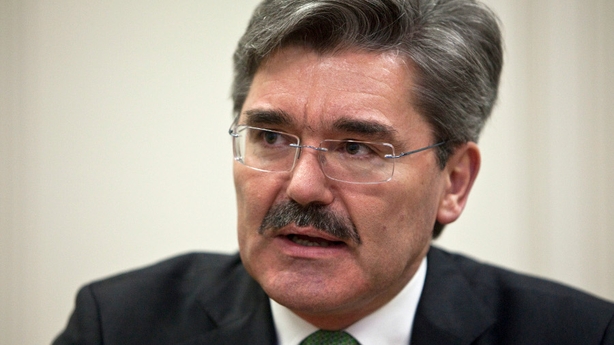German industrial group Siemens and French rival Alstom have agreed to merge their rail operations, creating a European champion to better withstand the international advance of China's state-owned CRRC.
Siemens will own 50% plus a few shares of the joint venture, to be called Siemens Alsto.
Under the terms of the deal, Alstom will supply Henri Poupart-Lafarge as chief executive, helping to counter criticism that France is giving up control of another national industrial icon.
The non-executive chairman will come from Siemens.
The framework deal, which still has to be approved by Alstom shareholders as well as regulators, is a Franco-German industrial breakthrough for French President Emmanuel Macron but is a move that has riled opposition politicians.
Their worries centre on France losing control of its TGV high-speed train - a symbol of national pride that has highlighted French engineering skill - and possible job losses.
Finance Minister Bruno Le Maire said the French government welcomed the planned tie-up, which he said would protect French jobs.
The Siemens and Alstom transport businesses span the iconic French TGV and German ICE high-speed trains as well as signalling and rail technology.
They have combined sales of €15.3 billion and earnings before interest and tax of €1.2 billion.

"This Franco-German merger of equals sends a strong signal in many ways. We put the European idea to work and together with our friends at Alstom, we are creating a new European champion in the rail industry for the long term," said Siemens CEO Joe Kaeser.
Alstom's Poupart-Lafarge said: "Today is a key moment in Alstom's history, confirming its position as the platform for the rail sector consolidation."
The deal leaves out in the cold Canadian transportation group Bombardier, which also held talks with Siemens, sources have said.
It faces a separate battle this week to protect jobs in Quebec and Northern Ireland.
China's CRRC, with annual revenue of about $35 billion, is bigger than Siemens Mobility, the rail and infrastructure division of the German conglomerate, Alstom and Bombardier Transportation combined.
Previously focused on China, it has won projects in Britain and the Czech Republic in the past year, and is eyeing the UK's High Speed 2 project, which will connect London with cities in the north of England.
The global headquarters, rolling stock business and stock-market listing of the new entity will be in Paris and the signalling and technology business in Berlin.
The new company, with 62,300 employees, targets synergies of €470m four years at the latest after closing of the deal, which is expected at the end of 2018.
The companies said their operations were largely complementary, with Alstom present in growth markets in the Middle East and Africa, India, and Central and South America, while Siemens was strong in China, the US and Russia.

